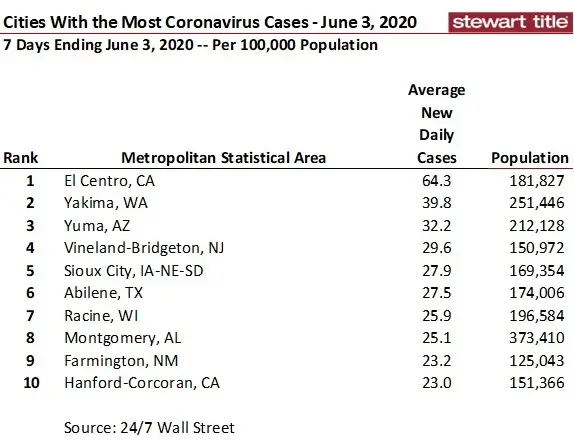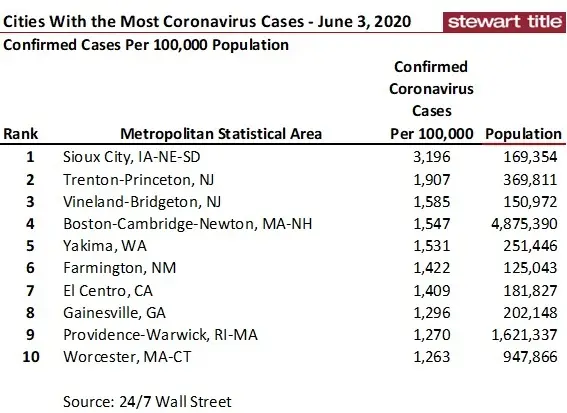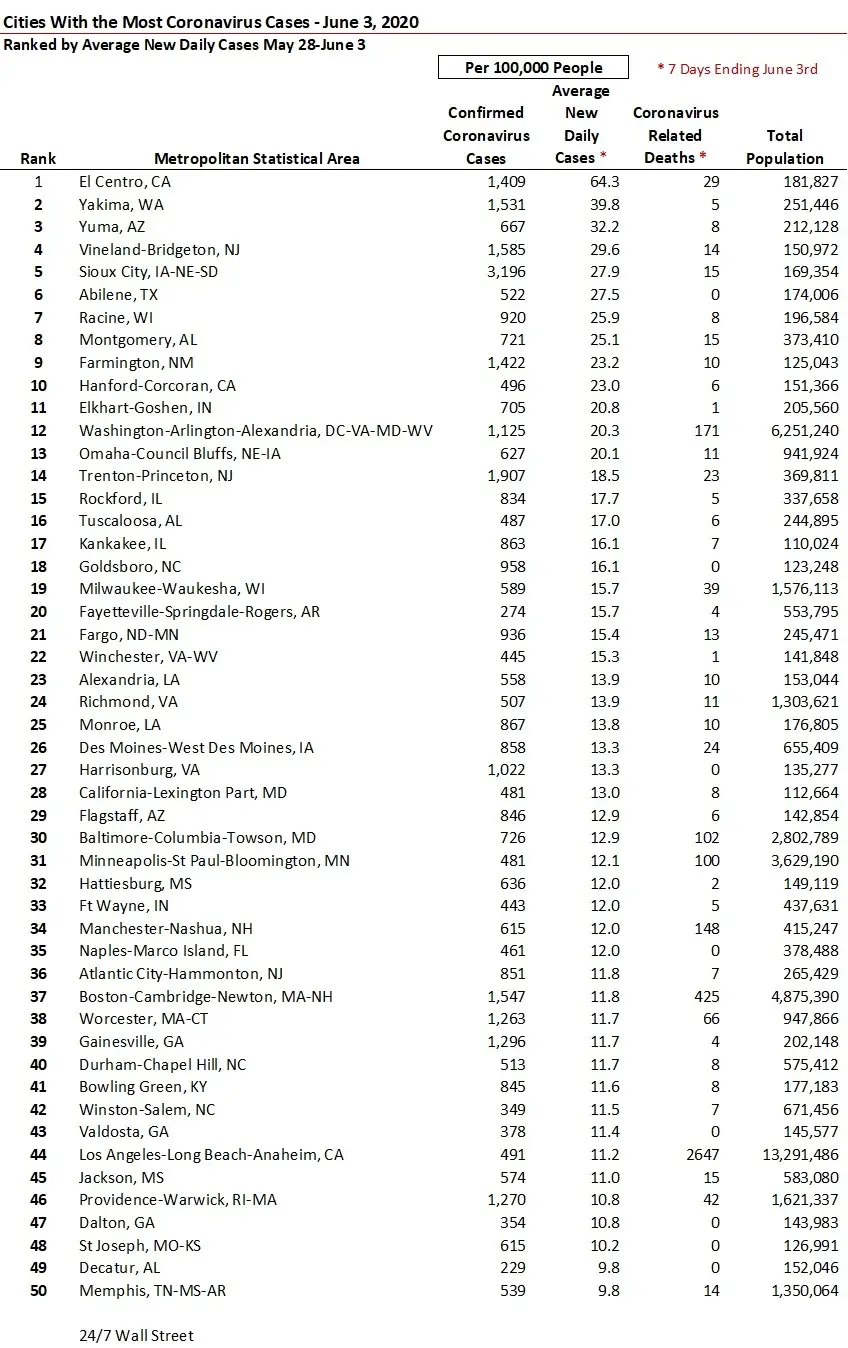Cities With the Greatest Number of New Coronavirus Cases -- May 28 - June 3, 2020
The Coronavirus infection rate is akin to the ocean tide as it ebbs and flows – but not on a set time schedule and, like the tide, varies in intensity from one location to the next.
The latest average number of new daily cases of Coronavirus per 100,000 people from May 28th though June 3rd was tallied by 24/7 Wall Street. They ranked all Metropolitan Statistical Areas (MSAs). Results were reported on the 50 MSAs with the greatest number of daily average new cases per 100,000, allowing an apple-to-apples comparison across metros with differing populations. Where Coronavirus is expanding now is not just geographic nor large-city oriented. The top-10 cities are shown in the following table. Not one of the top-10 metros has more than 400,000 population.

The next table shows the 10-metros with the greatest total number of confirmed cases per 100,000 population. An incidence of 1,000 cases per 100,000 population equates to a 1.0 percent rate of infection. Overall, the U.S. with an estimated population of 331 million and 2.035 million confirmed cases, has seen a Coronavirus incidence of 0.61 percent.

The following table shows all of the top-50 MSAs sorted by the average number of new coronavirus cases daily from May 28th through June 3rd.

To read the full study from 24/7 Wall Street click https://247wallst.com/special-report/2020/06/05/cities-where-covid-19-is-growing-the-fastest-4/?utm_source=247WallStDailyNewsletter&utm_medium=email&utm_campaign=DailyNewsletter&utm_content=JUN092020a
To read last week’s Stewart Blog click http://blog.stewart.com/stewart/2020/06/03/cities-with-the-greatest-incidence-of-coronavirus-as-of-may-27-2020/
Change is rapid regarding top cities. While the New York-Newark-Jersey City MSA had been considered ground-zero for U.S. Coronavirus infections, it did not even make the top 50 metros this go-around. That is good news. Also note that as testing expands, the total number of reported cases will increase but that does not necessarily correspond to an-overall rise in incidence. Many cases likely went undetected in the past.
Ted
